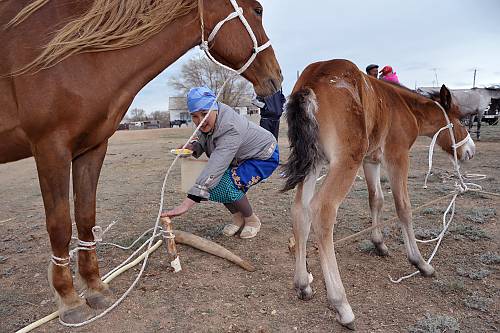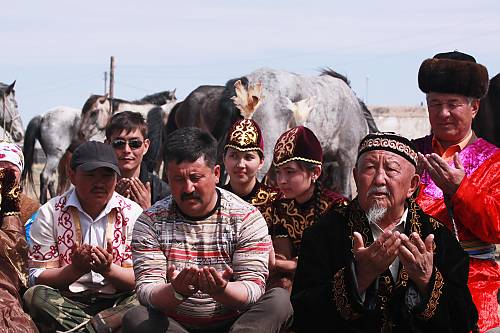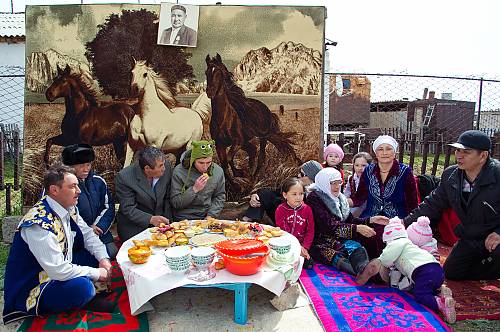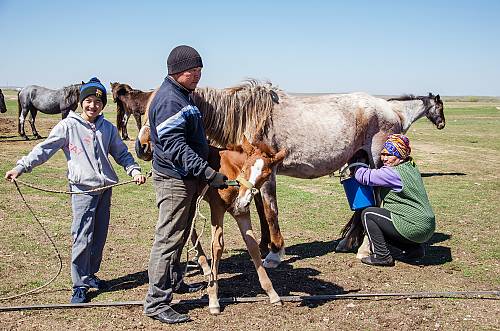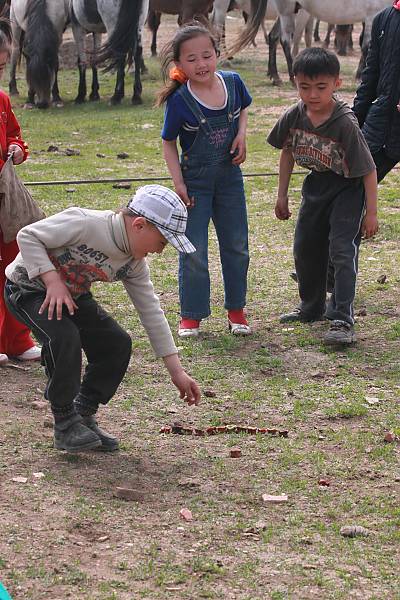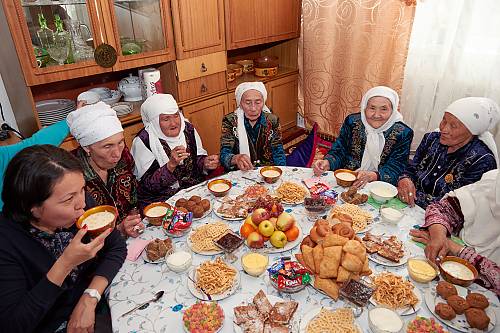Traditional spring festive rites of the Kazakh horse breeders
Inscribed in 2018 (13.COM) on the Representative List of the Intangible Cultural Heritage of Humanity
Traditional spring festive rites of the Kazakh horse breeders – taking place in Terisakkan Village in the Ulytau District of Karaganda Oblast – mark the end of the old and the beginning of the new yearly horse-breeding cycle. Rooted in traditional knowledge about nature and the age-old relations between man and horse, the rites involve skills inherited from nomadic ancestors, adapted to present-day reality. Preceded by year-long preparations, the main constituents of the practice are: ‘Biye baylau’ (literally, ‘tethering mares’), the ancient ‘first milking’ rite encompassing the separation of mares and foals from the herds, milking the mares, and celebrating with songs, dances and games; ‘Ayghyr kosu’ (figuratively, the ‘stallion’s marriage’), a recent rite for adjoining stallions in herds; and ‘Kymyz muryndyk’ (metaphorically, the ‘initiation of koumiss’), the ‘first koumiss sharing’ rite, opening the season of its production and sharing. The rites take around three weeks in total, until the koumiss sharing ceremonies, which take place in every household, are over. The rites open a new yearly cycle of reproduction and manifest traditional Kazakh hospitality. Faced with the forced transition in the twentieth century from a nomadic way of life to a settled one, bearers have adapted the traditional form of horse breeding to meet present-day conditions to ensure its continued viability.

